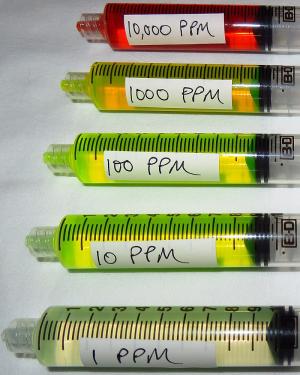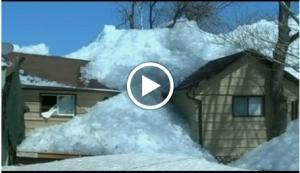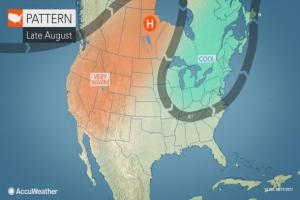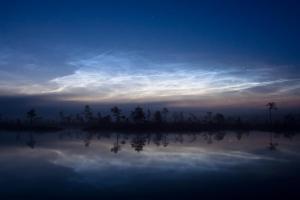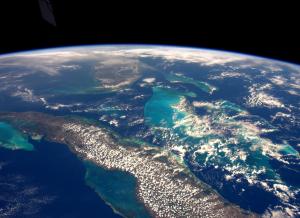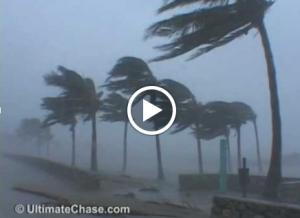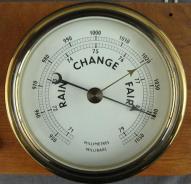All year we have been discussing the Earth's rocks, minerals, and processes. What we haven't discussed yet is the Earth's atmosphere and weather. Much of the year we have been watching videos as part of a Daily Dose of Destruction where the Earth's geological processes become destructive. We are going to continue the series of videos, but with an emphasis on the destruction weather causes.
Daily Dose of Destruction: Tornado
Section 1: Composition of the Atmosphere Lab
SUSD5 Student Version of the Composition of the Atmosphere Lab
Purchase a copy of this Lab for 0.75 cents at Teachers Pay Teachers.
The Earth's atmosphere is primarily made up of Nitrogen, 78.08%, and Oxygen, 20.94%. Argon, water vapor, and a bunch of other gases called trace gases make up the rest of the atmosphere. A trace gas is found in such small quantities that scientists don't really measure it by percentages. Instead, they begin to use Parts Per Million or ppm. 1 ppm is equal to .0001%.
Water vapor and some trace gases make up the planet's greenhouse gases. A greenhouse gas contributes is good at absorbing infrared radiation. Greenhouse gases are good if kept in the right balance. If the scale tips either by adding more greenhouse gas or taking away a greenhouse gas from the Earth's atmosphere can have dramatic effects on the planet. In fact, if the planet didn't have these greenhouse gases, it would be about 35 degrees C warmer.
The five greenhouse gases that affect the atmosphere the most are water vapor, carbon dioxide, methane, ozone, and nitrous oxide.
Water vapor: The warmer the planet gets, the more water is evaporated from the water bodies, and the more water vapor is added to the atmosphere.
Carbon dioxide: Volcanoes, human activity, and decaying organisms are the leading causes of adding carbon dioxide to the atmosphere. Trees "breathe" in carbon dioxide, so stripping too many trees from the land can cause an increase in these levels. Human production and usage of automobiles are also great contributors to the amount of CO2 added to the atmosphere.
Methane: There isn't very much methane in the atmosphere at all, but it is a very important greenhouse gas. Bacteria, volcanoes, and organic sediment all release methane into the atmosphere. Landfills and livestock are great contributors to methane concentration.
Ozone, or O3, is a direct result of air pollution. Carbon monoxide found in smog is a great contributor to the increase in ozone.
Nitrous oxide: Like carbon dioxide nitrous oxide is added to the atmosphere due to fuel combustion such as found in power plants, and automobiles.
The video below demonstrates how important greenhouse gases are.
Section 2: Layers of the Atmosphere
Daily Dose of Destruction: Ice Tsunami
There are five main layers of the atmosphere: Troposphere, Stratosphere, Mesosphere, Thermosphere, and Exosphere.
As you move up in the troposphere, the temperature, and the air pressure decrease. The troposphere is the layer in which we are surrounded. Our weather, clouds, and smog all happens in the troposphere. The jet stream, narrow belts of strong winds at the boundary between the stratosphere and the troposphere. The boundary is called the tropopause.
At about 10 km, you will enter the stratosphere. In the stratosphere, the temperature increases, but the atmospheric pressure decreases. This is where jets fly, where weather balloons reach before bursting and then falling back to Earth. The ozone layer is found in the stratosphere. The ozone layer provides a shield from harmful energy from the sun called ultraviolet radiation, the same energy that is known to cause skin cancer. Scientists in 1985 discovered a hole or a thinning of the ozone layer. The largest hole is found over Antarctica and there is a smaller hole found over the North Pole. The ozone layer is on the mend however thanks to the banning of chemicals such as chlorofluorocarbons or CFCs found in aerosol cans and refrigerants. Chlorine gas found in CFCs breaks the ozone, O3, down into oxygen, O2. That sounds good to have more oxygen, but oxygen isn't very effective at blocking UV radiation.
When you reach almost 50 km into the atmosphere, you will hit enter the mesosphere. Temperature decreases as you move up and wind speeds are incredibly fast. As meteors enter the mesosphere, they begin to burn and break up into what we see as shooting stars. Noctilucent clouds (high altitude clouds) can sometimes form near the poles in the mesosphere. Scientists know the least about this layer.
At about 80 km, we enter the thermosphere. What we call outer space begins here. Many man-made satellites orbit in the thermosphere. Temperatures dramatically increase as air pressure continues to decrease. X-ray and UV radiation from the sun is absorbed in the thermosphere. Auroras, and Northern Lights, are visible because the ionosphere is found in this layer. Because of the thermosphere, AM Radio waves are bounced all over the world causing many stations to be heard over your radio.
There is one last layer of the atmosphere called the exosphere. The space shuttle orbits in the exosphere. The exosphere is the transition between the atmosphere and outer space. There are only a few molecules of air and ions. Atmospheric pressure is pretty much 0 at this point. There really isn't a good boundary between the exosphere and just plain outer space, but it doesn't take long for the rockets to reach this point. It is only about 280 km or 174 miles.
Section 3: Atmospheric Pressure
Daily Dose of Destruction: Hurricane Wilma
During the discussion and reading about the different layers of the atmosphere, we talked a lot about air pressure decreases with altitude. This is simply because the closer you are to the surface of the Earth, the more air molecules there are. We call this air pressure, atmospheric pressure. Atmospheric pressure at sea level is 14.7 pounds per square inch, which means every square inch of your body is being squeezed with 14.7 pounds of air pressure. Added up, that is a lot of weight on your shoulders. The cool thing is that our bodies also have 14.7 pounds of air pressure pushing out as well, equalizing the pressure. You have 14.7 pushing down on you, but at the same time, you have 14.7 pounds pushing in the opposite direction. Below is a lab that demonstrates what happens when air pressure is not equalized.
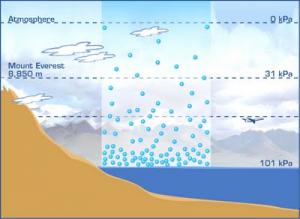
|
|
SUSD5 Student Version of the Atmospheric Pressure Soda Can Lab
Purchase this lab at Teachers Pay Teachers for 0.50 cents.
Atmospheric pressure is not constant; it is constantly changing. Understanding these changes helps meteorologists predict weather patterns. A barometer is an instrument used to measure changes in atmospheric pressure. When air pressure drops, you can expect stormy weather ahead. When air pressure rises, you can expect clear skies and sunny weather, for the most part. Later on, you will learn all about weather and the use of barometers in its prediction. For now, though, complete the lab below by building your own basic barometer, and let's see your basic prediction of upcoming weather.
SUSD5 Student Version of the Barometric Pressure Barometer Lab.











